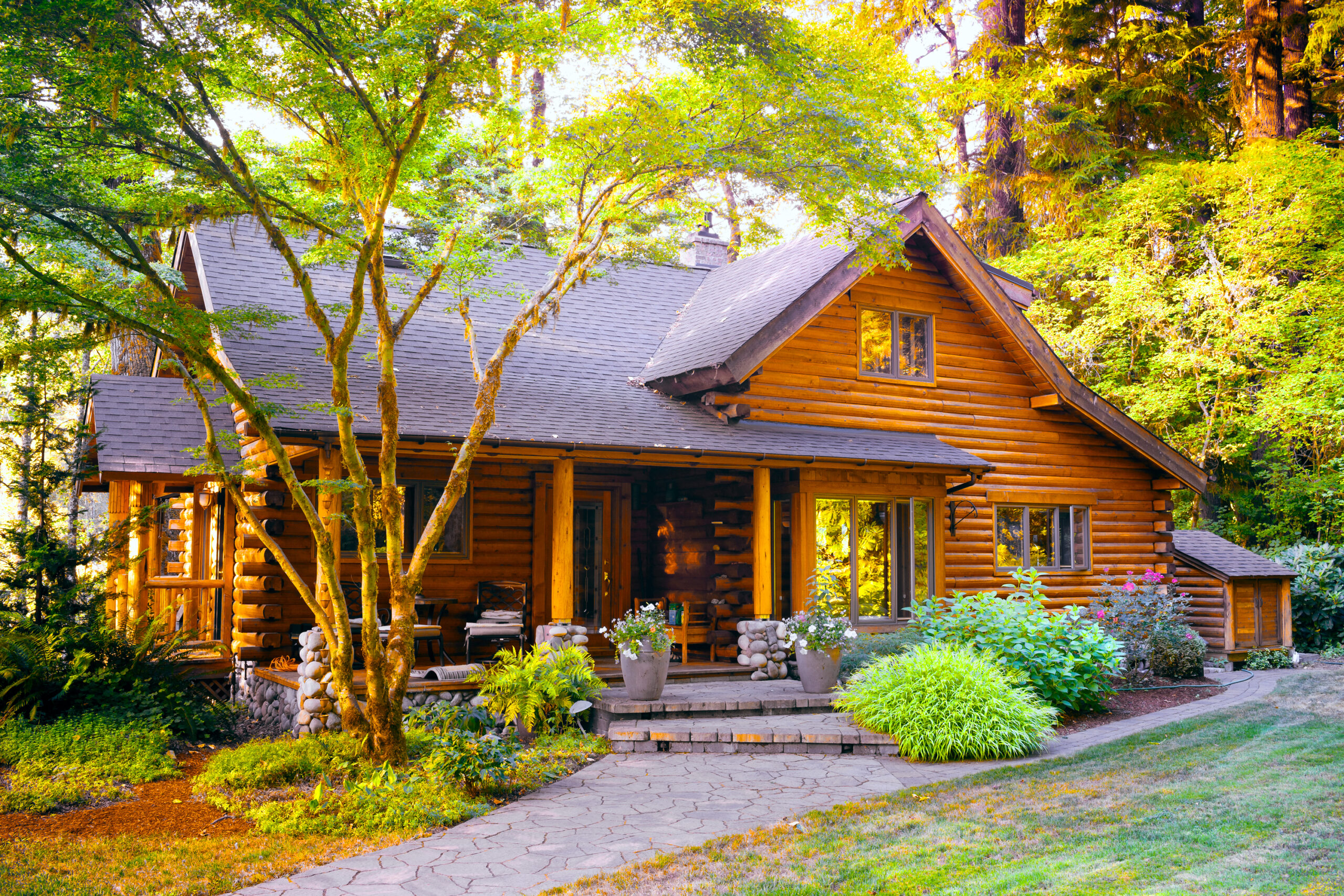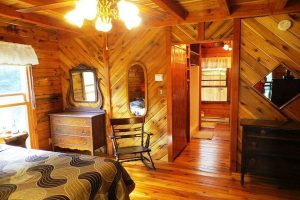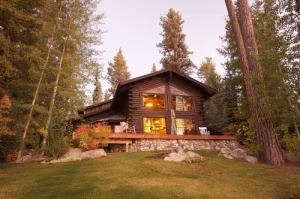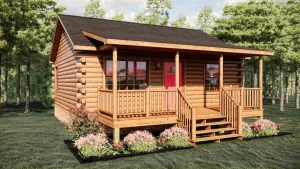For many who love the outdoors and long for a simple, peaceful life, building a log cabin is a dream. But more people are seeking eco-friendly lifestyles, not just nature’s beauty. An eco-friendly log cabin has a lower environmental impact and saves on energy costs, improves air quality, and extends its lifespan. Before you build or renovate a log cabin, this guide will show you some simple and practical ways to make it as eco-friendly and sustainable as possible.
Choosing a Sustainable Wood Source
Choosing wood that doesn’t harm the environment is the first and most important step in building an eco-friendly log cabin. Wood can be reused again and again, but only if it’s harvested responsibly. Avoid felling endangered or irreplaceable trees. Instead, choose wood from certified forests, such as those certified by the Forest Stewardship Council (FSC).
Using locally sourced wood also helps reduce the carbon footprint of transportation. Cedar, pine, and fir are excellent choices because they’re durable, insect-resistant, and generally widely available. If you choose responsibly harvested wood, your log cabin will be sustainable and environmentally friendly from the start.
Install energy-efficient insulation
The best way to make your log cabin energy-efficient is to install insulation. Without proper insulation, you’ll spend more on heating and cooling. This not only increases your energy bill but also your carbon footprint.
Use insulation made from environmentally friendly materials such as wool, cellulose (made from recycled paper), or cotton batting. These natural materials are harmless and decompose naturally. They also provide excellent insulation. Furthermore, ensure that the gaps between the logs are properly sealed. This procedure prevents air leaks and energy waste.
If your log cabin is well-insulated, it will stay warm in the winter and cool in the summer, eliminating the need for extensive heating and cooling systems. This makes it easy to live sustainably year-round.
Install a Renewable Energy System
If you truly want your log home to be green, consider using natural energy sources like wind or solar power. For off-grid log homes, solar panels are one of the most popular and practical options. They can power lights, appliances, and even your hot water system.
For homes in windy areas, small wind turbines are an excellent alternative or supplement to solar power. Another option, if circumstances allow, is a geothermal heating system. These systems use geothermal energy to efficiently heat and cool your home.
While these systems are initially expensive to install, they pay for themselves over time through lower energy bills and minimal environmental impact.
Build with Eco-Friendly materials.
Besides the logs, you also need to consider the roofing, flooring, insulation, finishes, and paint needed to build your home. Many common building materials can pollute the air or the environment with harmful chemicals.
To build your home in an environmentally friendly way, use natural and safe materials like bamboo, cork flooring, reclaimed wood, and clay paint. Using these materials not only reduces waste but also gives your home unique character and charm. Choose low-VOC (volatile organic compound) materials for finishing to make the indoor air healthier and more pleasant to breathe.
Airflow and Natural Lighting Planning
How well your log cabin blends into its surroundings depends largely on its construction. Good planning can maximize natural light, so you don’t need to rely heavily on artificial lighting during the day. Place windows where they receive sufficient sunlight and a good view, and ensure cross-ventilation to keep the air fresh.
To stay warm in the winter and insulated in the summer, install energy-efficient double- or triple-pane windows. Installing solar tubes or windows is another way to bring in more natural light without increasing electricity consumption. This simple design choice can significantly improve comfort and financial efficiency.
Take water-saving measures
Water is another important resource to consider when creating an eco-friendly home. To reduce water consumption, install water-saving faucets, showerheads, and toilets. Another good way to save water is to collect rainwater. This is useful for farming, cleaning, and even flushing toilets.
If your home is off-grid, you can consider a graywater harvesting system. Save money on your water bill by heating and cooling your home in an environmentally friendly way.
Choose eco-friendly heating and cooling options for your home.
Instead of traditional gas or electricity, consider more environmentally friendly options for heating and cooling your home. Many people choose to use wood stoves in their log cabins. To be more environmentally friendly, choose high-efficiency stoves certified by the Environmental Protection Agency (EPA); these use less fuel and produce less smoke.
You can also use a pellet stove, which burns compressed wood pellets made from sawdust and other waste. This is a great way to use green energy. Ceiling fans and strategically placed windows can help you stay cool without having to use the air conditioning frequently. In fact, if you do need to use electricity, you can use solar panels to power fans and tools.
Reduce Waste During Construction
Building a log cabin can generate a lot of waste if not managed properly. Plan your construction carefully to avoid wasted materials and reuse excess wood. You can recycle old materials or donate them to a local contractor or workshop for a new purpose.
Hire an environmentally conscious contractor who disposes of waste in an environmentally friendly manner. Every piece of material you save is good for the planet and will save you money in the long run.
How to keep your log cabin in good condition
Building a log cabin with an eye for the environment is just the beginning. Maintaining the long-term health of the logs is just as important. Use natural, non-toxic products and cleaning agents for maintenance. Seal the logs regularly and use eco-friendly paint or sealant to protect them from water, UV rays, and insects.
Inspect your house seasonally for damage or leaks to prevent more extensive repairs later. Sustainable maintenance methods not only keep your house in good condition but also ensure that it remains environmentally friendly in the long run.
Questions and Answers
1. Which wood is best for building an eco-friendly log cabin?
Choose cedar, pine, or spruce, as these woods are long-lasting, renewable, and often harvested in environmentally harmful ways.
2. Can I build an eco-friendly house without grid power?
Of course! With solar panels, a rainwater harvesting system, and a compostable toilet, you can easily and safely live off standard utilities.
3. How can I reduce my home’s energy consumption?
Effective insulation, energy-efficient windows, and green energy sources like solar panels can all help significantly reduce energy consumption.
4. Are eco-friendly building materials more expensive?
Some materials are initially more expensive, but in the long run, they are often worth it because they use less energy and require less maintenance.
5. What can I do to make my log cabin more eco-friendly?
First, switch to LED lighting, improve insulation, repair air leaks, and use eco-friendly cleaning and maintenance products.
Summary
Building an eco-friendly log home is more than just a style; it’s a commitment to living in harmony with nature. From using eco-friendly wood and insulation to installing water and energy-saving systems, every choice you make helps protect the environment and makes your home healthier. Whether you’re building a new home or renovating an old one, small, eco-friendly choices can make a big difference. You’ll have a beautiful, comfortable log home while also demonstrating an environmentally friendly lifestyle to future generations.




